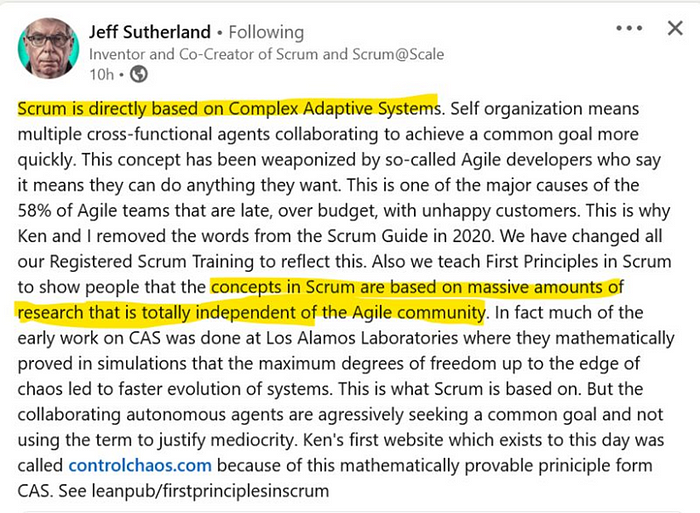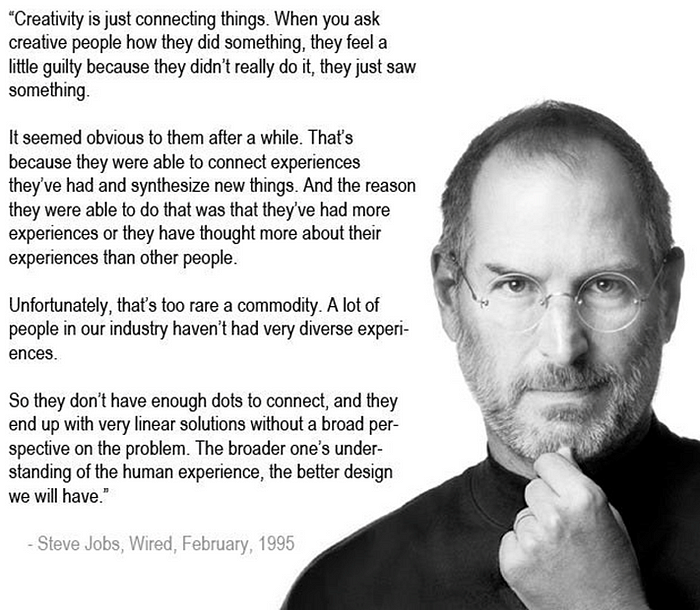Scrum Master — What Lies Ahead
Evolution or Obscolesence
Curious about the future of the Scrum Master role? How will emerging technologies, remote work, and evolving Agile practices reshape this vital position? Join me as we explore the future of Scrum Masters, uncovering the skills and innovations needed to thrive in an ever-changing landscape. Discover the new challenges and opportunities ahead, and learn how Scrum Masters can stay ahead of the curve. We’ll also delve into the evolution of Agile to understand the journey so far, setting the stage for the Scrum Master’s evolving role and the essential skills for the future.

In modern business’s dynamic and ever-shifting landscape, Agile methodologies have emerged as a critical approach for organisations seeking to adapt, innovate, and consistently deliver value. As we discuss the evolving role of the scrum master and the skills needed for Scrum Masters of the future, it is vital to look back on how we got here in the first place, some of the mistakes we may have made and the evolving context for the world of Agile.
The Four Parts (Jump to later sections with hyperlinks provioded if you wish too)
01. The Evolution of Agile
02. The Hard Truth — Reality Behind the Hype
🛣️ The Evolution of Agile
#️⃣ Agile Journey so far
In the 1980s, 1990s, and early 2000s, approaches based on scientific management and frameworks like the Capability Maturity Model (CMM) dominated the headlines. While groundbreaking in their time, these traditional approaches emphasised rigid hierarchies and standardised linear processes, making them ill-suited for modern knowledge work’s fast-paced business demands and evolving and complex IT landscape.
2001 saw a group of visionary software developers craft the Agile Manifesto, aiming to break free from these constraints. They prioritised collaboration, flexibility, and a relentless focus on the customer, thus creating a framework better aligned with the dynamic needs of contemporary work environments.
However, even before the Agile Manifesto was conceived in 2001, several pioneering approaches laid the groundwork for its evolution.
Extreme Programming (XP), introduced by Kent Beck in the late 1990s, was one of the foremost methodologies that challenged traditional project management. XP emphasised practices like pair programming and test-driven development (TDD), promoting a collaborative and iterative development process. Rapid Application Development (RAD) and the Dynamic Systems Development Method (DSDM) also emerged in the early 1990s, focusing on rapid prototyping and user involvement. The New New Product Development Game — an article published in HBR in January 1986 already talked about “realising that the old, sequential approach to developing new products simply won’t get the job done.”
In today’s fast-paced, fiercely competitive world of commercial new product development, speed and flexibility are essential. Companies are increasingly realizing that the old, sequential approach to developing new products simply won’t get the job done. Instead, companies in Japan and the United States are using a holistic method — as in rugby, the ball gets passed within the team as it moves as a unit up the field.
The New New Product Development Game by Hirotaka Takeuchiand & Ikujiro Nonaka (link)
These methodologies collectively highlighted the limitations of conventional approaches. They underscored the need for more adaptive, customer-centric processes, ultimately shaping the principles enshrined in the Agile Manifesto.
#️⃣ From Scrum to Scaling Frameworks
Scrum emerged as a dominant methodology, characterised by time-boxed iterations (sprints), cross-functional teams, and the delivery of product increments. However, as organisations scaled their Agile practices, especially with large enterprises taking the Agile plunge, new challenges surfaced, necessitating the development of frameworks like the Scaled Agile Framework (SAFe), Large-Scale Scrum (LeSS), and Disciplined Agile Delivery (DAD).
The SAFe website has an impressive list of case studies from diverse industries — from South West Airlines to Nordea and much more. While each of them may have its own uniqueness and may/may not have implemented SAFe fully, the fact remains that enterprises have started to give a serious shot at agility. Agile now had boardroom acceptance.
#️⃣ The Silver Bullet
By 2020 and beyond, Agile became the magical silver bullet that everyone thought could solve all problems. It started in the IT world, but then it spread everywhere.
Trying to market a product? Just called it Agile, and it was golden!
Needed to manage personal goals? Slap some Agile on it, and suddenly, you were a productivity guru.
Learning and development? Agile had it covered, making every training program sound cutting-edge and relevant.
It didn’t matter what people were doing; if they sprinkled a bit of Agile jargon on it, others would think they had discovered the secret to success. Apparently, Agile could do anything and everything — no questions were asked.
The agile mindset was forgotten in the mad rush to adopt frameworks, practices and tools — which was actually the heart of agile!
This continued until 2022, when cracks started to show in the agile movement, with declining interest in the roles of Scrum Masters and Agile Coaches. Why did this happen? Let’s explore that in the next section — a reality check!


💯% Hard truth — The Reality behind the Hype
🔴Disillusioned leadership with failed or non-impactful agile transformations
Despite its widespread adoption and success, Agile has faced significant criticism (Agile Is Dead! or The End of Agile), particularly in the context of prescriptive frameworks like Scrum and SAFe. The proliferation of buzzwords and linking every new management concept to agile, the mindless pursuit of certifications that actually have become a circus, and an overemphasis on rituals without the right adaptation to context have often obscured Agile’s core values and principles.
This has resulted in weak Agile implementations that brought minimal or no business benefits, leading to disillusionment and apathy among many senior leaders.
Take the case of ANZ . ANZ embarked on an Agile transformation with much fanfare. The company invested heavily in training and certifications, ensuring that all team members were well-versed in Agile and had a very focused and high-investment Agile transformation program. However, a few years down the line, they ran into major problems.
“It’s been a disaster,” says one former senior ANZ executive. “It doesn’t work and whoever becomes the next CEO, the first thing they’ll do is to get rid of agile.”
Source: Shayne’s world: How Shayne Elliott’s ‘agile’ ANZ got stuck (smh.com.au)
While ANZ might be an extreme case, Scrum Masters often find themselves overwhelmed by the complexity of their environment and run into unsupportive and sceptical leadership. The organisations continue to not focus on fostering a culture of empowerment and innovation.
While many are only doing agile for “compliance” as lip service, even where there is good intent, their focus remains solely on rigidly following Scrum rituals like daily stand-ups, sprint planning, retrospectives, and, if SAFe is being implemented, PI Planning. The agile mindset — conveniently forgotten.
The mechanical execution of these rituals lost the true essence of Agile, which emphasizes adaptability and responsiveness to change.
With Agile often reduced to a set of rituals and certifications rather than a mindset shift, it has led to tonnes of ineffective implementation and disillusioned leadership that is developing an apathy for Agile.
🔴Context has evolved — 2001 was more than 20 years ago.
People are usually afraid of change because they fear the unknown. But the single greatest constant of history is that everything changes.
― Yuval Noah Harari, Homo Deus: A History of Tomorrow
The Agile Manifesto was written more than twenty years ago, and in this fast-paced world, that’s a really long time. Things have changed.
As we fast-forward to the present, the context in which Agile operates has transformed dramatically. Remote work, globally distributed teams, and the relentless pace of digital transformation have become the new normal.
Team members who graduated from university within the last five years. are likely native Agile users who have never worked in a Waterfall environment.
Additionally, most people in the IT space today, regardless of their experience level, especially those involved in application development, maintenance, and support, have undergone Agile training. This training might be digital learning or instructor-led. Still, they probably received formal instruction on the Agile Manifesto and/or Scrum. While the implementation may be flawed, many of these individuals are already working on projects utilising some Agile methodology.
10 years ago, the primary role of a Scrum master was training and coaching people on the transition to agile. But in a world where people have been running agile transformation for well over a decade now, and agile methodology is considered business as usual, not a novel concept anymore, do we really need Scrum Masters to entirely focus on training and coaching?
🕺EVOLVING ROLE OF SCRUM MASTERS
This brings us to the critical question of where do we go from here? What could be the changing landscape for Scrum Masters to help them chart their way towards building a strong future for themselves.
The following are pivotal trends that I see will shape that future:
Trend 1️⃣: AI won’t replace Scrum Masters; Scrum Masters who use AI will
By leveraging AI as a personal assistant, Scrum Masters can significantly enhance their effectiveness and efficiency. Imagine an AI tool that provides real-time advice during sprint planning meetings, suggesting optimal task allocations based on team members’ past performance and availability. This AI assistant could answer common questions about Agile practices, freeing Scrum Masters from repetitive inquiries and allowing them to focus on more strategic and high-value activities.
AI could analyze team dynamics and provide insights into potential interpersonal conflicts, enabling Scrum Masters to address issues proactively. It could also curate relevant articles, videos, and case studies to keep teams updated on the latest Agile trends and best practices.
Additionally, AI can automate routine administrative tasks, such as tracking sprint progress and generating performance reports, giving Scrum Masters more time to foster collaboration, innovation, and continuous improvement within their teams. In this way, AI becomes a powerful ally, amplifying the impact of Scrum Masters rather than replacing them.
Trend 2️⃣: Scrum Masters as Leaders with “Skin in the Game.”
In the evolving Agile landscape, the role of the Scrum Master must go beyond mere facilitation and coaching. Scrum Masters need to have skin in the game, fully integrating into their teams rather than being seen as outsiders. If they have to be critical for enabling high-performing teams and guiding them to define and deliver value within their contexts, they need to do it from within, not as a consultant or a coach. They need to be in there with the team — with their skin in the game.
Scrum Master who can actively inspire and empower their team by encouraging ownership of challenging tasks, fostering innovation through brainstorming sessions, resolving conflicts and making things happen will be more successful. By being deeply involved and committed, these Scrum Masters create a high-performance and innovation culture, ensuring their teams thrive and deliver substantial value. This shift from facilitation to genuine leadership distinguishes successful Agile teams in today’s dynamic business environment.
Trend 3️⃣: Scrum Mastery as a Skill — not a role
Scrum Mastery as a skill, rather than a dedicated role, will become increasingly important in modern Agile teams. While there will still be dedicated Scrum Masters, many roles, such as Project Managers, Architects, Business Analysts, and others involved in team-based activities, will need to develop and rely on Scrum Mastery skills.
The shift to Scrum Mastery as a Skill ensures that Agile principles are embedded throughout the team, fostering a culture of collaboration, adaptability, and continuous improvement without always depending on a dedicated Scrum Master.
For today’s Scrum Masters, this change means evolving into more strategic leaders and mentors and probably picking up other roles while continuing to guide others to embrace and apply Agile principles effectively. Even if the role title may not be “Scrum Master,” in whatever role they play, they will still be the “Ambassadors of agility.”
🔮 CRITICAL SKILLS FOR THE FUTURE
While some Scrum Masters exhibit these behaviours and skills today and that contribute to their immense success, they are in the minority and not the norm. In the future, these will become mandatory, non-negotiable skills.
Skill 1️⃣: Operate from First Principles
In the future, the most effective Scrum Masters will excel at operating from first principles rather than strictly adhering to guides and frameworks.
This involves breaking down problems into fundamental building blocks and essential elements, allowing a deeper understanding of the core issues. Imagine a Scrum Master leading a team facing delays in project delivery. Instead of just enforcing standard Agile practices or following a predefined process, the Scrum Master would deconstruct the problem by examining the root causes, such as communication gaps, unclear requirements, or bottlenecks in the workflow.
By asking powerful questions like “What assumptions are we making about our process?” and “What are the fundamental obstacles preventing us from meeting our deadlines?” they can uncover the absolute truth, separating facts from assumptions. This might reveal that the team needs to be more committed during sprint planning due to unrealistic expectations or that the developed user stories need more clarity.
Armed with these insights, the Scrum Master can construct a clear and logical view from the ground up, proposing tailored solutions such as adapting the backlog refinement process, implementing more rigorous acceptance criteria, or introducing a daily check-in to enhance communication. This approach fosters innovative thinking and problem-solving, empowering teams to navigate complex challenges with agility and insight. By focusing on first principles, Scrum Masters help their teams become more resilient and adaptable, ultimately driving greater success in an ever-changing environment.
Skill 2️⃣: Be Masters of Complexity
Scrum Masters will be adept at navigating the complexities of Agile teams by deeply understanding complex adaptive systems. They will leverage this knowledge to anticipate and manage the dynamic interactions and emergent behaviours within their teams. While many Scrum Masters of today misinterpret the Cynefin framework as a mere classification tool, Scrum Masters of the future will use it as a sensemaking framework to guide decision-making in complex environments.
By embracing complexity theory, future Scrum Masters will recognize patterns of change and evolution, enabling them to foster environments where teams self-organize and adapt organically. This deeper understanding will empower Scrum Masters to facilitate collaboration more effectively, anticipate and mitigate risks proactively, and guide teams toward innovative solutions that thrive in an ever-changing environment. For instance, instead of categorizing problems into predefined domains, they will dynamically assess situations and tailor their strategies to the evolving context, ensuring that teams can respond with agility to unforeseen challenges and opportunities.
This mastery of complexity will be crucial as Agile teams face increasing unpredictability and interconnectedness in their work. Future Scrum Masters who can skillfully navigate these complexities will be indispensable in driving their teams’ success and innovation.

Skill 3️⃣: Outperform the machines at “being human.”
Successful Scrum Masters will distinguish themselves from machines by harnessing their creativity and adeptness at connecting the dots. As Steve Jobs famously articulated, “creativity is just connecting things.” This means synthesizing diverse perspectives to form new, innovative solutions. Unlike machines, which excel at processing data and executing predefined tasks, Scrum Masters will leverage their human ingenuity to envision possibilities beyond conventional frameworks.
Imagine a Scrum Master leading an Agile team through a challenging project. Instead of relying solely on data and standard practices, they draw inspiration from seemingly unrelated fields — perhaps incorporating design thinking principles from the creative arts or problem-solving techniques from engineering. This ability to connect disparate ideas fosters an environment where novel solutions emerge from collaborative efforts.
By nurturing creativity and facilitating interdisciplinary collaboration, Scrum Masters inspire their teams to innovate boldly. They create a space where team members feel empowered to think outside the box, drawing connections that machines might overlook. This approach enables teams to solve complex challenges creatively, driving continuous improvement and sustainable growth in Agile environments. As Jobs said, “You can’t connect the dots looking forward; you can only connect them looking backwards.” Scrum Masters, with their unique human touch, will guide their teams in making these vital connections, outperforming machines by being truly human.

THE WRAP
The journey of Agile continues, and the role of Scrum Masters remains pivotal in its evolution. Those who fail to evolve and cultivate the essential skills — the ability to leverage AI, a deep understanding of complexity, creativity, and connect the dots — may face significant challenges. In contrast, Scrum Masters who actively build these skills will thrive. Whether the title of Scrum Master persists or not becomes inconsequential; what truly matters is mastering the principles and practices of Agile. By embracing continuous learning, fostering innovation, and facilitating effective collaboration, Scrum Masters can steer teams towards success in an ever-changing landscape. As we look ahead, let us remain proactive in shaping the future of Agile, ensuring it continues to empower teams and drive meaningful outcomes.
** Did you like this? Feel free to bang that clap button. Do you want more? Follow me on Medium, LinkedIn or Instagram or read more here. ***
